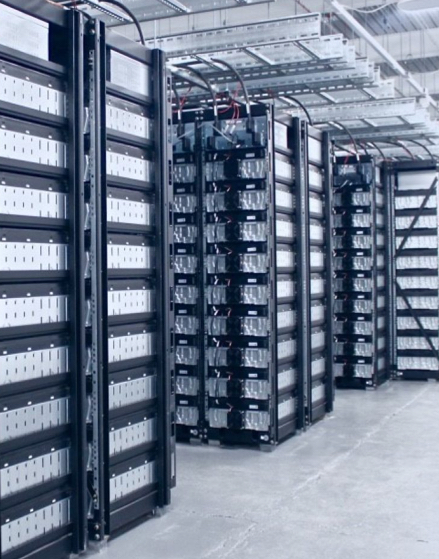By Rupert Newland, CEO, Arenko
Battery storage assets are the linchpin of the energy transition and a key infrastructure solution to the current energy crisis. The current UK power crisis is a complicated mix of several different factors; higher gas prices as Russia cuts off 30% of EU supplies, a structural shift away from aging fossil fuels to wind dominated renewable energy, and the declining French nuclear and EU hydro capacity. At the heart of these factors is the need for a profound re-appraisal of the national, systemic value of flexible storage assets, including utility scale battery storage systems.
Rather than embarking on a debate about the relative merits or faults of relying on expensive gas power generation, large and costly nuclear new build, or variable wind resources, we believe focusing on the solution provided by industrial scale battery storage deployment is the most productive response to the current energy crisis.
- It is now empirically proven that high renewable generation grids are technically and commercially feasible at 50% – 70% penetration rates, as long as multi gigawatt scale battery storage assets are deployed on the system to balance the inter-day and intra-day variability of wind and the frequency and voltage instability of a low inertia/high renewable grid
- It is also clear that 100MW to 200MW scale lithium ion battery storage systems are commercially viable and can be deployed today, without relying on further technology and cost improvements that are expected over the coming decades
- It is increasingly apparent that a resilient, decarbonised grid of the future will need significant battery storage assets of multiple different durations, with lithium ion likely to dominate 1-6 hour duration system needs and pump-storage hydro, compressed air, and hydrogen solutions providing for longer duration system needs
- The development of the 20 GW of batteries that National Grid thinks the UK system will need by 2030 under a high wind penetration scenario is a huge industrial undertaking, but will create a resilient and dynamic midstream infrastructure base that allows the UK system to cope with the multifaceted nature of the current energy crisis
- An industrial scale battery storage asset class of this nature will allow the majority of gas powered generation assets to be retired over the next two decades. Whether carbon sequestration on large-scale CCGT plants can act as a residual baseload support to the system is yet to be proven, and it seems likely that renewable gas/biogas peaking plants will also make a significant contribution. Either way, it appears a very significant proportion of the expensive gas that we currently use to set marginal prices of the entire power system will be pushed off our system
- The structural decline in French and UK nuclear generation capacity and the unwillingness or inability of governments to replace baseload nuclear with new plants in a timely fashion is contributing to a structural rise in power price volatility. This is separate to, but concurrent with, the natural growth in intraday price volatility that comes from high wind generation rates. Both these forms of volatility can be easily balanced by battery storage assets load shifting excess renewable energy from the night time or the middle of the day into the morning and evening peaks on a daily basis, effectively recreating the baseload nature of nuclear generation
- The energy crisis is highlighting a long forgotten strategic value of large-scale storage assets for both the gas and power industry, including the value of flexible long duration hydro storage assets. Whilst Lithium is unlikely to be able to deal with the occasional but problematic ‘Dunkelflaute’ low wind conditions that northern hemisphere systems experience in the winter, it is clearly a commercially available solution for the normal daily and intraday variability of wind power and provides a simple load shifting solution to transfer mid-day solar and night time wind resource into evening peaks in the UK
- Unfortunately, Europe is experiencing what appears to be increasingly frequent and probably structural declines in hydro reservoir resource due to extended summer drought conditions. Many of these assets were built from the 1950s-1980s under nationalised or subsidised conditions. Their vital role in preventing extreme pricing scenarios and lowering average prices in the long run is being starkly highlighted in the current crisis. It must surely be a priority now for governments across Europe to introduce sustainable long-term storage subsidy programs to provide strategic levels of longer duration storage capacity to augment the existing hydro fleet
- With electricity demand expected to grow between 50% and 300% under various decarbonisation and electrification scenarios, we are also realising that the high renewable and digitised grid of the future will have to rely on digital inverters that form an integral part of battery storage systems to balance the frequency and voltage on the system on a real-time basis. The UK is leading the world in developing the fast response products and tools needed to manage this more structurally unstable net zero grid, but it is already clearly technically feasible for battery storage inverters to act on a grid forming basis to stabilise frequency and to use their significant reactive power capabilities to provide very rapid response voltage stabilisation services on a localised basis
In summary, it is clear utility scale battery storage assets can help ameliorate many of the aspects of the current energy crisis. They can:
- substantially reduce the use of expensive gas power plants, reducing the impact of Russian gas supplies
- replace significant portions of declining base load nuclear and hydro reserves by load shifting daily flows of solar and wind power
- significantly strengthen the structural resiliency of the UK grid and reduce our dependence on external power markets to meet peak winter demand need.
